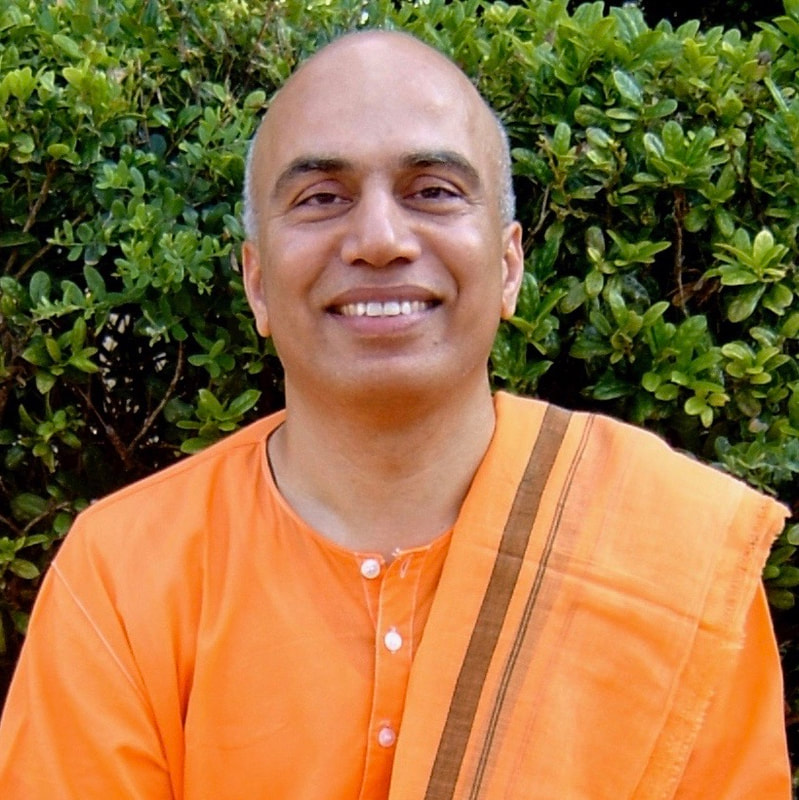|
The Metrowest Interfaith Dialogue Project, a special project of Our Lady of Fatima Shrine, Holliston, sponsored an evening of sharing across faiths. On Tuesday, December 7, multifaith neighbors gathered around a fascinating conversation and surprising connections with Hindus, Christians, and Sikhs. Swami Tyagananda, head of the Vedanta Society of Boston, presented some central tenants from his recent publication, Looking Deeply on Hindu discernment and our relationships with each other, the earth, and the Divine, or God. In response to Swami’s presentation, Siri Karm Singh Khalsa, of the Sikh community of Millis, and Fr. Carl Chudy presented responses to the presentation through the lens of Sikhism and Christianity. Here is the Christian response from Fr. Chudy.
A Christian Response to Swami Tyagananda’ s Looking Deeply I want to thank Swami Tyagananda for accepting to share his work with our interfaith community and frankly found it a fantastic opportunity to deepen my interfaith literacy around the Advaita Vedanta tradition of Hinduism. This ancient text teaches something at the heart of Christianity in many different forms, and that is the art of discernment or the discrimination between what I understand in Hinduism, the real (unchanging, eternal) and the unreal (changing, temporal). The description in the introduction of how this understanding begins is all about “looking at everything with care and attention.” (8). As Swami Tyagananda points out, this is not just an intellectual exercise but something at the heart of our experiences that we can become aware of in profound ways. He says: “Everything that we see with the senses and imagination with the mind is the result of misperception. When we look deeply, we clearly see the truth of nonduality.” (9) Nonduality is a notion in Christian spirituality and prayer that is just recovering from centuries-old traditions that go back to ancient contemplative prayer traditions and cosmologies. Fr. Richard Rohr, Franciscan spiritual master, and therapist are one of those voices today reasserting nonduality for Christians. He says: “Contemplation teaches a different mind which leaves itself open so that when the “biggies” come along (love, suffering, death, infinity, contradictions, God, and probably sexuality), we remain with an open field. We don’t just close down when it doesn’t make full sense, or we are not in full control, or we immediately feel validated. That calm and non-egocentric mind is called contemplative, or non-dual thinking.” In this sense, Christian nonduality is the ability to hold the tension of opposites, rest comfortably in ambiguity, and resist the temptation to demonization and exclusion. For me, this comes up, particularly in my interfaith dialogue work. Through its many expressions, Christianity has historically tended toward exclusivism, that we are the only real authentic expression of God’s mercy through Jesus Christ, and all other faiths are too, but to a lesser degree. This exclusiveness reveals a tendency between spiritual arrogance and an open mind to our religious differences that we cannot easily explain. Holding this tension is crucial to any authentic interfaith dialogue that respects all parties and understands God’s mysteries that are beyond us and our religious traditions. Nondual thinking allows us to remain in that creative tension and explore not only our commonalities but also what our differences may teach us. This sense of nondualism also arises in our contemplative prayer traditions for what Christian tradition has classically known as “the unitive state,” the highest level of spiritual attainment according to the traditional tripartite road map of “purgative,” “illuminative,” and “unitive.” [[1] Both nondual or the “real me” Both traditions hint at a permanent, irreversible shift in the seat of selfhood and in the perceptual field that flows out from this new identity. The former, nucleated sense of selfhood dissolves, and in its place, there arises a capacity to live a flowing, unbounded life in which the person becomes “one” with God (as the Christian mystic Julian of Norwich famously expressed it) and one with one’s neighbor, flowing in the fundamental matrix of love without the need for either edges or centers.[2] Finally, the Hindu sense of consciousness reflects the nondual or true self, which is birthless and deathless, pure, and perfect, as Swami Tyagananda shares. For Christians, Jesus Christ was born as the human face of God. Taking the God-made human image seriously, we understand this inner divine image imprinted within humanity as our true self. It is our best self, our kindest, more inclusive self. This is amplified in the boundary-breaking of Jesus reflected in the Christian scriptures who reached beyond his own race and religion and sought out all through stories of the Good Samaritan, pointing to the extraordinary faith of those whom his contemporary faith leaders cast as faithless and far from God: the prostitute, the leprous, the foreigner, etc. The early Christian communities reached out to all of the Mediterranean and Asia up to China in its first five hundred years beyond its Palestinian Jewish roots. In that growing, historical journey toward the mystery of Christ in all things in mysterious ways, we are still living discerning today. Fr. Carl Chudy, SX [1] One explanation of the Three Ways states that at the Purgative stage, the beginner is standing in cold water in the wading section of the pool. In the Illuminative stage, the person is in the deep end of the pool and is treading water but has learned how to trust that God will supply the grace needed. In the Unitive stage, the person is in the middle of the ocean during a total tempest. This stage requires total surrender in the face of the infinity and obscurity of a loving God. The prayer at this level is the most faithful, most trusting, and most loving with a love which is agape—a total self-oblation to God in love. (Stages-of-Spiritual-Journey-by-St-John-of-Cross.pdf (christinasemmens.com) [2] Bourgeault, Cynthia. The Heart of Centering Prayer (p. 46). Shambhala. Kindle Edition.
0 Comments
Leave a Reply. |
AuthorFr. Carl Chudy Archives
June 2024
Categories |



 RSS Feed
RSS Feed